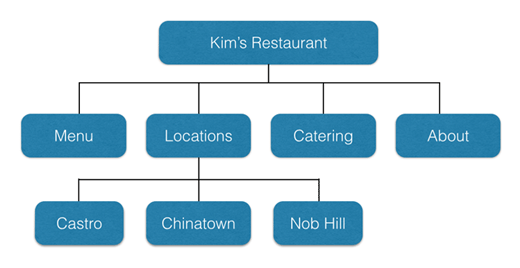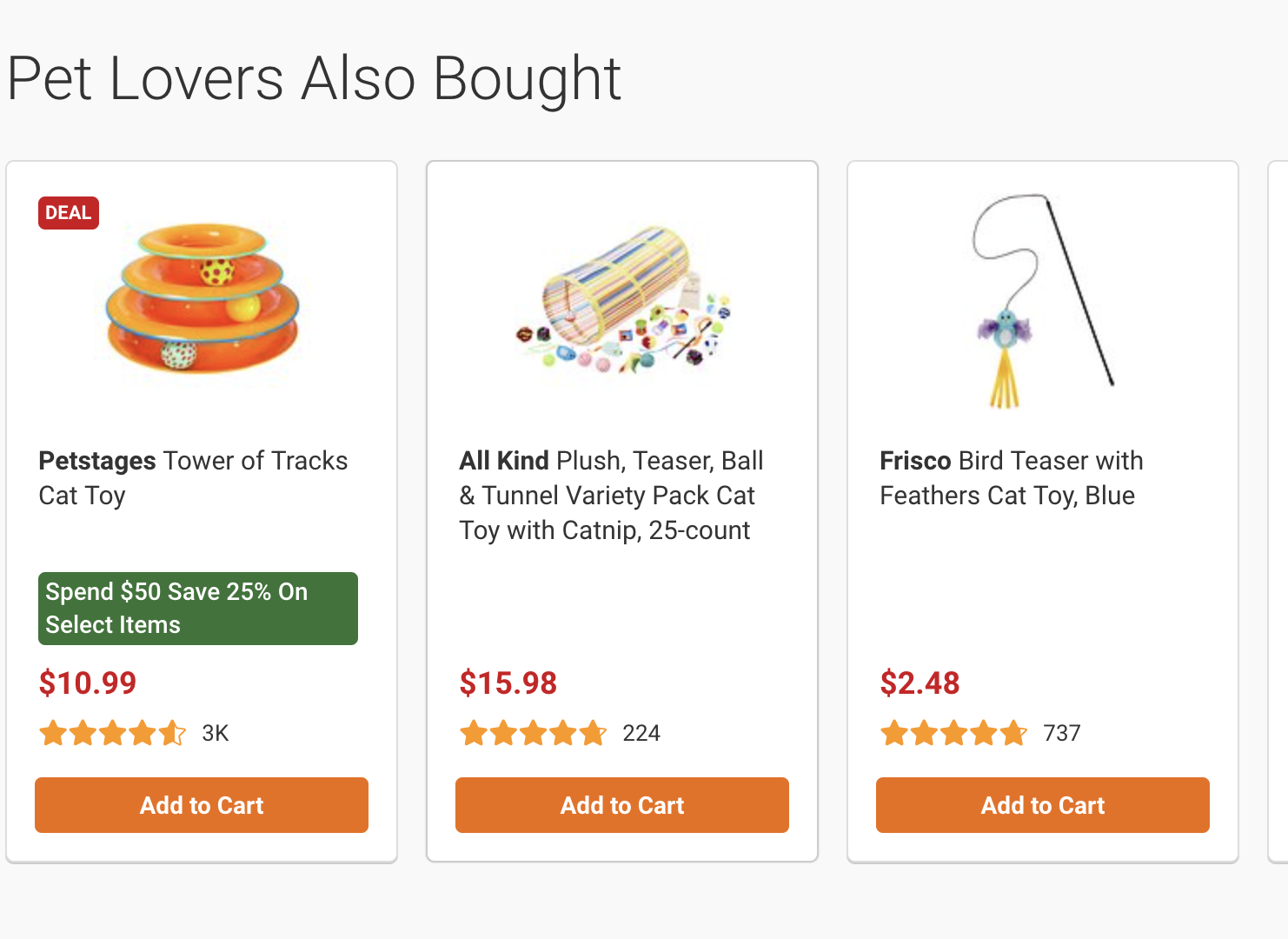You may have thought that getting a new website designed and published would be the hard part. But now that website builders are widely accessible and affordable, that’s become the easy part.
What’s harder is figuring out how to make sure your website is designed to do its job effectively and ensuring that the people you want to reach will be able to find it.
A lot of different factors (and a good amount of work) go into those two things. One important yet relatively easy tactic that helps on both fronts is internal linking.
What is Internal Linking?
Internal links are any link on a website that points to a page at the same domain. That typically includes all the links in a page’s main menu, those included in a page’s footer section, and any links on a page or within a piece of content that drive traffic to other parts of the same website.
You can find examples of internal links all over this very page: the menu at the top of the page with links to Web Hosting, Blog Home, etc. is full of internal links, as is the Trending section on the right side of the page, as well as the term “website builders” in blue in the first paragraph of this post. All of these links point to other pages on Virtue Media.com, rather than pointing outward to another website.
Internal links are a common feature on most websites, and for good reason. They play an important role in the way people experience your website, as well as in how search engines see it.
5 Reasons Internal Linking is Important
For website owners, internal links are an important tool for improving the usability of your website and strengthening your website’s SEO (search engine optimization). Creating an internal linking strategy early on in the process of running a website can pay off in a few main ways.
1. Internal links give you the chance to drive visitors to additional pages on your website.
Getting visitors to your website to begin with is hard enough. You don’t want them to immediately click away and never come back. Ideally, you want them to stick around for a little while and see what your site has to offer.
Internal links direct visitors on one page of your website to other pages they may also be interested in. Internal links make it easy for people on your website to find the pages most likely to be relevant to their interests. That creates a better overall experience for them, and because they spend more time on your website, produces better results for you.
2. Internal links are an important part of building an intuitive site structure.
Good web design requires creating an intuitive user experience. You want to make it as easy as possible for website visitors to find the information on your website they’re looking for. Internal links are an important part of that.
Including links to the most important pages of your website in obvious spots ensures people can find them quickly and easily. And organizing your website around a clear menu and useful categories makes your website easy to navigate, even as it grows over time.
3. Internal links help search engine algorithms understand your site better.
Google and the other search engines use complex algorithms to figure out which pages are the best ones to put at the top of the results page for each search term. The algorithms are complicated and weigh a lot of different factors, but one of the top ways they gauge a web page’s relevance and value is via links.
External links (when other websites link back to yours) are generally given more weight in the rankings than internal ones, but internal links are still important.
Search engines use web crawlers to understand what websites are on the web, and which pages are on each site. When the web crawler lands on one of the pages of your website, it needs to be able to see the pages connected to it in order to add those to its database as well. When all the pages of your website are connected through internal links, it’s easier for the website crawler to find them all. Getting onto the website crawler’s radar is the first step to having any chance of showing up in the rankings.
In addition, the algorithms work to understand what a specific page is about by paying attention to the language used on the page, as well as by analyzing the other pages that link to it.
Say you have a page on your site all about dog collars. If most of the links pointing back to it are from pages that have something to do with dogs, that helps clarify to the algorithm that the page relates to furry pets of the canine variety. As a result, it will be more likely to show up for search terms that include the word “dog” and related terms.
4. Internal linking lets you choose anchor text for your pages.
Anchor text is the term that’s hyperlinked that points back to a page. It’s another factor search algorithms use to understand what a page is about.
If you look back to the first paragraph of this article, “website builders” is an example of anchor text. In our dog collar example above, any time a link to the page has “dog collars” as the anchor text, that confirms for the search algorithm the relationship between that term and the page.
While relevant anchor text in an external link can be a more powerful ranking factor, it’s not something you have control over. By contrast, as a website owner, you can choose the anchor text for every internal link on your website, giving you lots of opportunities to associate your most important pages with the keywords you want them to rank for.
5. You can strategically use internal links to strengthen SEO authority of individual pages.
Not all links are created equal. When a web page with a lot of SEO authority links to another page, that link does more to increase the value of the page than a link from a less authoritative one.
That’s information you can use in your internal linking practices. Any time you want to increase the SEO value of a new page, adding links to it from the pages on your website with the most SEO authority can give it a boost.
But you should be aware that the more links on a page, the less value gets transferred to each of them. So this isn’t a strategy to abuse. If you notice a page on your site ranking at the top of Google, you can’t suddenly load it with links to other pages on your website in the hopes it boosts all of them. Instead, you want to think carefully about which pages are the most important and the most relevant to the term it’s ranking for, and look for natural ways to add links to those.
8 Internal Linking Best Practices to Follow
At this point, the value of using internal links on your website should be a given. But you want to use them thoughtfully and strategically. Here’s how to do so.
1. Determine your site structure early on.
Even if your website starts with a few simple pages, it may well grow in the months and years to come. By establishing the site structure you want it to have early on, you’ll make it easy to keep your website organized and intuitive no matter how big it gets.
For most websites, you can visualize your site structure like a pyramid. At the top is your home page, which you’ll want linked on every other page of the website. The next level below that will be the most important pages or categories you include in the main menu. And if your website’s big enough to include more pages beyond that, they’ll be grouped by type below the category pages.

One thing to keep in mind with your website structure is that you want to keep the number of clicks required between any two pages on your website to a minimum. Choosing smart categories and creating a good menu should help with this. If visitors can easily move from one page to any other page on the site, that makes their experience more seamless.
The bottom of every page on the Virtue Media website includes a footer that has internal links to the most important pages on the website. This is an example of a common internal linking strategy.

Creating a footer like this is a smart tactic because it gives you a natural way to include internal links to your most important pages on every page of the website.
And because footers are common, visitors know they can usually scroll down to quickly find links to the website’s main pages. For SEO purposes, it makes it that much easier for web crawlers to find your most important pages and see the most common anchor text you’ve chosen for them.
3. Look for internal linking opportunities for every new page you create.
Each time you create a new page—whether it’s for a new product, service, or a blog post—as you’re working on it, think about what other pages on your website are similar or related to it.
If in the course of writing a blog post, you mention a topic that’s covered in another post in your website, go ahead and add a link to it! If you create a product page for an item that may be used in conjunction with another product you sell, mention and link to the related product on the new page.
When you get into the habit of thinking about internal links while creating new pages, it becomes easy to see opportunities and add them as you go.
4. Make a habit of adding internal links to new content on existing pages.
This part takes a little more work. In addition to adding links to the new pages you create, you also want to add links to your new content on the older pages. If you’re in the habit of doing a regular content audit, this can be a good step to include as part of that process. Otherwise, consider putting it on your calendar to do every month or two.
You can easily find instances of relevant keywords on your website by doing a site search in Google. By using the search format of site:yourwebsite.com “keyword” you’ll get a list of all the pages on your website that use the target keyword for your new content. Then it’s simply a matter of editing them on the backend to link those words to your new page.
5. Choose your anchor text carefully.
As we’ve established, the anchor text of a link is one of the ways Google determines what a page is about and which keywords to associate with it. When you’re adding internal links on your site, you want to use strategic anchor text that will help the pages rank for the terms you want them to.
If you’re pointing visitors to your dog collar page, using dog collars as your anchor text is smart. But saying “find our wide selection of dog collars here,” with here as your anchor text—not so much. The word here doesn’t tell Google anything about what’s on the page.
In many cases, you want the anchor text to be the primary keyword you want the page to rank for, or a term that’s related to it. Occasionally, when your primary goal for a link is less about SEO and more about encouraging visitors to take an action, you may want your anchor text to be a call to action (CTA), such as “Add to Cart” or “Explore the Collection.”
6. Think about the next steps you want a visitor to take when they’re on each page.
A big part of a good internal linking strategy is thinking about how it relates to SEO. But it’s at least as important to think about what you want to happen once a visitor lands on the page. What steps would you ideally like them to take next? Decide what links to include based on what you want visitors to do.
For example, if a visitor lands on a blog post and you want them to stick around on your website to learn more, then linking to related posts makes sense. If they’re on a product page and you want to encourage them to consider additional products, including internal links to related products or items “often bought together” can pay off.
On the other hand, for a landing page where you have one action in mind you want the visitor to take, you want to limit the internal links so they don’t serve as a distraction from the main action you’re encouraging.
Make sure the internal links you include match the goals of each page you create.
7. Don’t overdo it.
In the world of SEO, anything that seems like a shortcut almost certainly isn’t. The algorithms are sophisticated enough to catch onto any attempts website owners make to game the system and evolve accordingly. That means trying to cram a lot of internal links into every page of your site in the hopes that it will improve SEO simply won’t work.
The more links you have on a web page, the less link value they have. So it’s important to be thoughtful and strategic in which links you use, and how you use them. They should always be included in ways that make natural sense. A good rule is to consider whether the inclusion of an internal link would be confusing to the visitor. If so, you’re better off leaving it out.
8. Highlight your popular, recent, and related pages.
An easy way to supply internal links a visitor is likely to be interested in is to use plugins or widgets that automatically add links to a page based on a few main types of criteria. Many websites with blogs (including this one) use the side of the page to display a collection of the most popular and most recent blog posts.


This can help drive traffic to the links you most want visitors to check out, and can also help them more easily find content they may want to click on.
In WordPress, you have a few easy options for adding a section to the page that will automatically display the most recent content, and a number of plugins you can choose from for showing your most popular posts.
Another option you can use for both blog posts and product pages, is to use tools that automate the process of showing related content. For eCommerce websites, directing people toward products similar to the one they’re looking at can encourage them to add more items to an order.
And for content, showing related posts provides a personalized experience based on their interests, which increases the chances that they’ll stick around and read more on your site.

Get to (Internal) Linking
Internal links are a smart way to increase the amount of time people spend on your website, and improve your website’s SEO authority in one fell swoop.
All website owners benefit from thinking strategically about the best ways to use internal links. They’re a relatively easy tool you can use to create a better and more successful website. Why wouldn’t you?


![Internal Linking and Your Website [Beginner’s Guide] Internal Linking and Your Website [Beginner's Guide]](https://mdvirtue.com/wp-content/uploads/2021/02/Internal-Linking-and-Your-Website-Beginners-Guide.jpg)

![Yes, B2B Websites Can Use Personalization Too [Here’s How]](https://mdvirtue.com/wp-content/uploads/2022/02/Yes-B2B-Websites-Can-Use-Personalization-Too-Heres-How-400x250.jpeg)

0 Comments